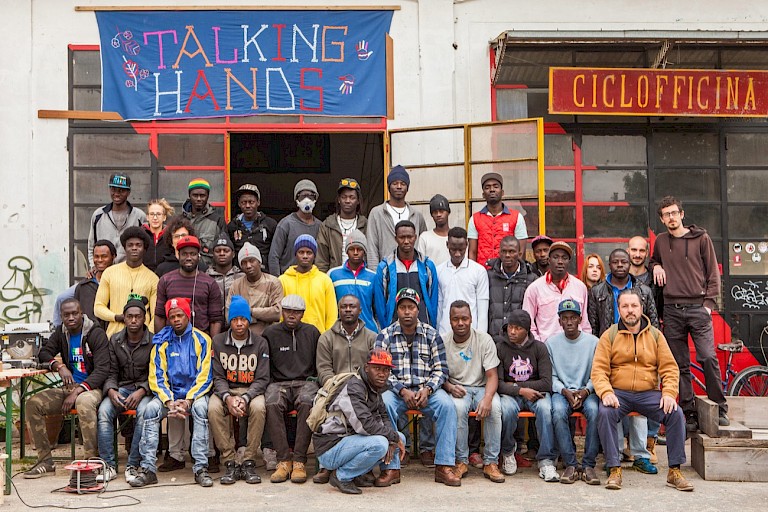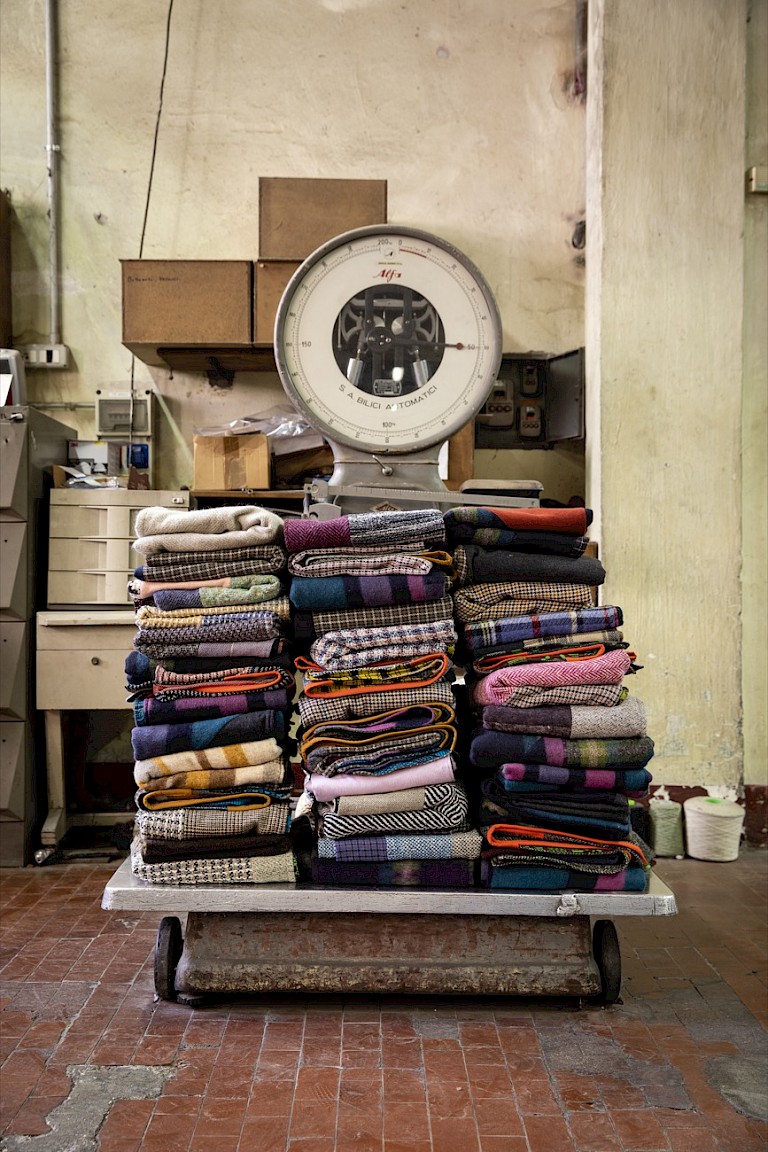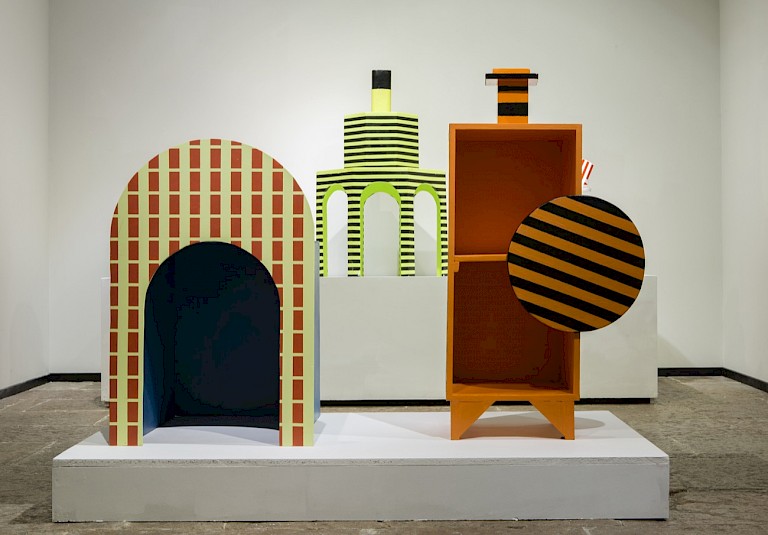



Talking Hands was born on the same day that hundreds of asylum seekers moved out of a former military barracks (a state property, run by a private firm) to make themselves visible to the city, occupying the very centre of the city, the Piazza dei Signori. (The architectural typology of a barracks inhibits exchange with the outside world (as opposed to facilitating exchange). The Piazza dei Signori is the hub from which all the main shopping streets emanate. As a protest action, several hundred young people stationed themselves in the square. The mobilisation was communicated by word of mouth, activating support from the local network of cultural and social centres.
The method for of the temporary occupation of the square was unprecedented: The project initiator and art director Fabrizio Urettini describes the young people redefining the square through installing a series of circular groups distributed in a ring. The largest ring served as the space and main body of the mobilisation. Here, a committee were established. It was responsible for bringing the requests of the people to the city prefect, and other local authorities.
Urettini was impressed by the nature of the interventions of the asylum seekers. In essence, the young people formed their own temporary government space. This was a change from the decorative function and/or the dominant feature of modern city squares; shopping / consumerism. The intervention that initiated Talking Hands might be understood as a temporary restoration of the original function of the city square. It was again a space of societal dialogue and negotiation; a circular, open-air assembly.
After some tension with the local police, a delegation from the asylum seekers was received by the city prefect. Talking Hands emerged as a way to continue the dialogue, and to exchange information between these young people, Urettini, and the activists of a social and cultural centre in Treviso. On this basis, the rooms of an the barracks began to transform into a space for inclusive and participatory planning called “Centro Sociale Django” (Django Social Center).
The core group of Talking Hands is made up of 15 people who run workshops, as well as around 50 people who temporarily reside in the space. Despite the decrease in arrivals following agreements between Italy and Libya in 2017, Italian reception centres remained vastly over-crowded (Urettini, Mc Carthy, 2020).[1] Urettini reports that, upon arrival, most asylum seekers are accommodated in former barracks that serve as reception centres.
The Talking Hands project has been developed through posing a question of fundamental importance to energetic and creative people aged 18 and 24-25, who found themselves in a barracks – a situation bordering on imprisonment. The asylum seekers were asked "What do you want to do when you grow up?" and "What do you know how to do?" and "What are your ambitions and desires?" Their answers provide an extremely rich and varied picture of the knowledge and ambitions of these young people. Practical skills amongst the group ranged across metalworking, embroidery, carpentry and more. In some cases the participants had only rudimentary knowledge of the trade they named, in other cases they had gained real experience during the crossing from their country of origin to Italy. In many cases their skills had been developed in the hope of being able to earn the next stage of their journey to Europe.[2] Other respondents were already experts in a trade, and had in-depth knowledge (particularly in the field of carpentry).
Based on this knowledge, an idea was born; to create a space where such skills and knowledge could be passed along, and further developed, and simply put to use. In addition, the asylum seekers had an opportunity to break from the isolation of their situation, expressing creative energy and producing various objects. Designers and other professionals have been paired with these young people. These figures can respond to particular needs and requirements of the young people. Training courses have been established, straddling the areas of learning/teaching and laboratory activity. The groups have already generated several product lines.
As curator, Urettini was inspired by the notion of design, rather than art. A design approach identifies different subjects, skills, and levels of training, and then inserts them into a production model. This developmental model offers the opportunity for refining trade skills, connecting and integrating them into the production mechanism as part of the supply chain.
Initially, supplies for projects were scarce. However, with some searching and ingenuity, materials found at the barracks were appropriated and refashioned. In the ten years preceding its use as a community centre for housing migrants and asylum seekers, the former barracks had been used as a municipal warehouse. The facility still contained a few hundred abandoned wooden boxes originally used for elections. These old ballot boxes were stripped and repurposed to create the first design project titled "Rìfugiati." The name was adopted from an Italian word encompassing two meanings; "take shelter" and "refugee." There is an added symbolism arising from the origin of the containers. The boxes were deployed in national elections - part of the process for electing politicians to exercise their function as representatives of the citizens.
A space was then chosen to house the laboratory, which the Talking Hands core group cleaned and renovated. The team adapted the space to a new life and function. From the very beginning of the project, it seemed necessary to take possession of a physical space for the group to develop a sense of a home and a place of belonging.
Keys to this space where handed over to the working group. Urettini felt this was a viable means for those working there to feel at home and enjoy some more humane aspects of life. The asylum seekers had been deprived of much of their personal freedom and community connection by the accommodation in the reception centres (barracks). Beyond a construction style that kept the inhabitants away from the surrounding area and people, the centres are managed by private companies prone to rationalising lives and activities to suit a profit motive. The laboratory space offered something different. It was populated and run by young people with permanent roles in the Talking Hands group, while others came to simply socialise, perform simple tasks such as recharging mobile phones, or to share in a meal. This reinforced and strengthened the sense of community that was created in the studio.
The initial phase of building social relations and the working group operating in the new space lasted about a year. The purpose of this time was to create methods and models for managing the activities and laboratories via direct democracy, based on the right to assemble, to decide together, for example, how to organise these working groups.
This type of process allows members of the group to share in the evaluation and decision making. When were effective decisions made? Which decisions less effective or counter productive? The discussions that followed were truly collective, inviting communally agreed solutions. This approach spread the evaluation and decision making from the individual to the collective body. It allowed members to protect and strengthen the project, despite the absence of financial support. The acceptance of risk by the group made a difference. What emerged was a shared preparation not to suffer, but to manage the consequences.
This founding phase was also powerful from a creative point of view. Every day allowed the emergence of a new idea, a prototyping, or an invention, etc. A sense of euphoria arose from working together in a space that allowed participants to leave the reception centres, and the formation of social networks in another, more welcoming context. However non-linear the creative paths, this first phase produced very interesting artistic results.
"Rìfugiati," the first items to be produced, were a collection of children's toy houses. These were created with a professional designer named Matteo Zorzenoni. The outcomes were presented in an independent design market at Christmas 2016, two or three months after the opening of the laboratory. This was followed in 2019 by the exhibition of a collection of coats and armchairs at the prestigious Salone del Mobile in Milan. The Milan show revealed domestic micro-architectures for children, expressing visions and needs for refuge and comfort zones.
Immediately afterward, the project was covered in leading sector magazines, such as Elle Decor, and in a large article in the newspaper Il Manifesto. All of this contributed to very high expectations surrounding the birth of the Talking Hands phenomenon, which ramped up considerable pressure toward the further development of the project. (Urettini)
Veneto, the administrative region of Treviso, like the rest of the Italian Northeast, is known for its industrial vocation. The region has changed from a place characterised by emigration to one that is wealth-producing, precisely by promoting an artisanal model. The most common approach is one of a family-run industry, a model that became famous as the economic locomotive of the Northeast with origins in the second half of the 1970s, especially in the textile and clothing sector. This model outsources production to small laboratories and subcontractors, and the approach is spread throughout the regional territory.
A famous phrase was coined to describe this economic model: "A shed for every bell tower." This phrase reflects a regional industry with a civic and religious value interwoven culturally into the industrial approach. The values of regional religion, in which work and sacrifice are revered as part of a Catholic tradition, are still profoundly present in the Veneto region. As a result of these dynamics, the native Vento population immediately distinguished the asylum seekers who make up the Talking Hands working group as "those who work." This was recognised from the beginning of the project. The working methods and goods created and produced by Talking Hands effectively changed the status of asylum seekers in the region, if not in formal terms, certainly in social and cultural terms.
The next step for Talking Hands was to establish connections to industrial suppliers of materials who would then form the atelier's network. Talking Hands primarily required waste from textiles, wood, and other materials that were greatly needed in its ateliers at the time. Since then, the collective has built a long-lasting relationship of trust with many of the suppliers of these materials.
For example, there is the Lanificio Paoletti mill, which has been supplying Talking Hands since 2017. This supplier recently presented its supply chain at the BIFTI in China. This wool mill is based in Follina in the Belluno Pre-Alps where, in the Middle Ages, Benedictine monks settled and created a complex system of water infrastructure which then allowed the great industrial development of the Veneto wool industry. The geographical position is characterised by slopes frequented by shepherds who came down before the Transhumance, for the shearing which took place on the days of Pentecost. The Lanificio has continued to maintain this tradition through the organisation of a festival entitled "The Wool Route" which is held in the factory - an industrial building that is also a structure of archaeological significance. Here, international artists work with the fabric, and are invited to reinvent the work space as an exhibition, experimentation, and meeting space. Talking Hands collective has participated as an invited artist (collective). Functioning in the area since 1795, like many Italian textile industries the mill faced a crisis with the introduction of synthetic fabrics in the 1950s. The industry was mainly retooled to serve the national and international luxury market. The facilities produce scraps, including very large pieces of high value materials (including from research outcomes). These off-casts are then regenerated in the Talking Hands collections.
In part, these relations arose due to a recent, notable increase in awareness of the importance of recycling and sustainable development in fashion, and other supply chains. The collective was able to activate opportunities to obtain and use the surplus material (not definable as waste due to the high quality).
[1] More than 600,000 arrivals between 2014 and 2017, dropping to just over 23,000 in 2018.
[2] These crossings could take years, with numerous stages. All the stages involve extra financial costs, and time to raise the money for payment. Hence, time between stages can involve work and training periods.
The excellence of the project lies in the approach the collective has adopted: to turn design thinking into an effective tool for the changing of of the asylum-seeker’s condition via production and distribution of products of high artistic and manufacturing quality.
At the same time, Talking Hands formed itself into an efficient tool for the creation of solidarity networks. As Urettini explains, the connections and relationships are not only made up of social services, but also (and above all) of a series of practical partnerships with companies that are attentive to the territory and have an ethical approach to the supply chain.
Among the partners who regularly supply redundant textile materials and patterns, there is the famous Lanificio Paoletti wool factory. Opened since the 18th century, this manufacturer works with “haute couture” using wool of the Alpago sheep, long considered waste because of its coarse texture/fibre. This material is now recovered without the use of chemical dyes.
Other well-known factories are involved, such as Tessitura Luigi Bevilacqua, in Venice, which uses looms from the 15th century.
The aim of Talking Hands has been fully achieved: It has found a means of overcoming the stereotype of welfare that a blind political vision attributes to asylum seekers. In addition, the Talking Hands narrative is applicable to the less well-off, to affirm/demonstrate the ability of these young designers to self-organise, self-determine, and become and offer themselves as a source of knowledge.
It also proves that migrants are an opportunity for a host country (especially for Italy, which is characterised by a dramatic demographic collapse). The people of Talking Hands, asylum seekers upon their arrival, have turned themselves into designers, and more importantly, showed themselves as contributing to the culture where they have become inhabitants.
The Talking Hands core group is made up of 15 people who run the workshops, as well as around 50 people who temporarily reside in the space. As reported by Urettini, when they arrived, most of them were accommodated in reception centres in former barracks, and despite the decrease in arrivals following the 2017 agreements between Italy and Libya (over 600,000 arrivals between 2014 and 2017, just over 23,000 in 2018), the situation of the Italian reception centres was and still remains critical (Urettini, Mc Carthy, 2020). Talking Hands project has been developed by asking a question, apparently banal, but of fundamental importance for very energetic and creative people aged 18 and 24-25, who find themselves in a situation of almost imprisonment.
Copyright for all text belongs to Shanghai Academy of Fine Arts, Shanghai University. Copyright for photographs belongs to the photographer and for the artworks to the artist.




